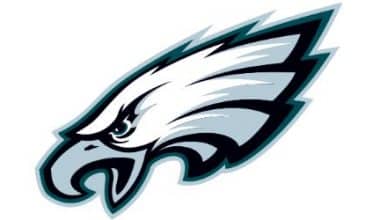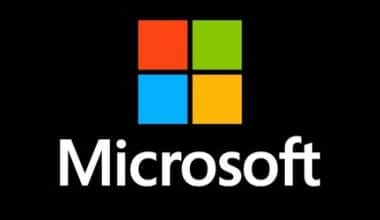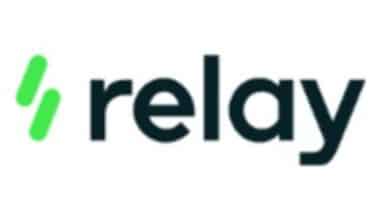Patreon allows users to support the creators of their favorite digital content, such as music, photographs, videos, podcasts, and webcomics. Fans are rewarded for this by receiving special benefits such as no advertisements or exclusive access to new products. The recent Patreon logo stirred a lot of emotions among users, as it tends to portray another meaning different from what it’s known for. We’ll look at the history and evolution of the Patreon logo in this guide, along with a general overview of the brand.
History and Meaning Of The Patreon Logo
Patreon, a commercial website, was founded in 2013 and is popular among musicians, writers, artists, video bloggers, and other digital content creators. Also, “patrons,” who provide financial support to their heroes, are well acquainted with him. As a result, millions of users have seen the familiar logo with the words “PATREON.” However, many people were dissatisfied with the most recent redesign: the current version of the Patreon logo appears uninteresting and non-conceptual to them because it was created in the spirit of simplicity.
Evolution Of The Patreon Logo: 2013-2023
2013 – 2017
The original Patreon logo was out of the box. To symbolize Patreon on the internet, the developers used a stylized white “p” inside an orange teardrop form. The service’s name, “Patreon,” was indented on the right, and each letter was unique: “p,” “a,” and “o” were the same form, “e” “rolled back,” and the left side of the horizontal dash “t” was abnormally short. Furthermore, all of the characters were written in lowercase.
2017 – 2020
In 2017, Patreon revised its logo and went beyond a simple facelift, entirely updating the font and abandoning the traditional teardrop motif. This is because the former logo appeared dated, particularly the font with an unusual shape. The word “PATREON” is printed in capital letters and is situated to the left of the thick vertical line in the revised edition.
Patreon uses the color red in the hue Fiery Coral (# FF424D). He created the circle depicted on the little icon. The main Patreon logo is black and blue, and it includes an inscription as well as a vertical stripe. This is a nice option because neither color is associated with any other popular brand.
The Patreon Logo Today
There is a transition to modern iconography trends in the present Patreon logo. There are three major aspects to consider: simplicity, absence of volume, and clarity of everything shown in the logo. At the same time, each element is obscured and represents its meaning. This is how the initial letter of the name “Patreon” gets transferred in this circumstance. The letter “P” is divided into circular and rectangular shards that are spaced apart. It is a cubism-inspired insignia with simply one vertical rectangle and one circle. Despite the criticism, the crowdfunding platform’s leadership has left a laconic image that matches the needs of the present.
The Font and Colors of The Patreon Logo
Patreon relied on minimalism after abandoning futurism, which many users disliked. Critics’ main complaint was that the redesigned Patreon logo did not correspond to the crowdfunding platform. The combined symbol proved to be too general: it may equally belong to any financial services company. The emblem, which consists of a blue rectangle and a red circle, is overly abstract, making it difficult to comprehend what the site specializes in.
The simple lettering in the Patreon logo is done in the GT Walsheim Bold font, which lacks serifs. Otto Baumberger, a Swiss poster designer from the 1930s, was his inspiration. Until 2013, the logo featured a modified Opificio that was strangely reminiscent of SF New Republic.
The Patreon logo is textual, but there is no single word because the “P” has been made into graphic detail. The corporate color palette currently includes two colors: coral (for the circle) and black (used for the rectangle).
The History Of Patreon
Patreon was launched in May 2013 by developer Sam Yam and musician Jack Conte, who was searching for a means to monetize his YouTube videos. They devised a platform that enabled ‘patrons’ to pay a certain amount of money each time an artist made a work of art. In August 2013, the startup raised $2.1 million from a consortium of venture capitalists and angel investors. Patreon raised an additional $15 million in a series A financing led by Index Ventures’ Danny Rimer in June 2014. In January 2016, the company closed on a new $30 million series B financing sponsored by Thrive Capital, bringing Patreon’s total funding to $47.1 million.
In the first 18 months, they gained almost 125,000 “patrons.” The website stated in late 2014 that patrons were donating over $1,000,000 per month to the site’s content creators.
Patreon bought Subbable, a comparable optional membership service founded by the Green brothers, John and Hank Green, in March 2015, and transferred Subbable producers and content, including CGP Grey, Destin Sandlin’s Smarter Every Day, and the Green brothers’ own CrashCourse and SciShow channels. The merger came as a result of Subbable’s anticipated move of payment systems to Amazon Payments.
Challenges
The site was the victim of a huge cyber-attack in October 2015, with about 15 gigabytes of password data, donation records, and source code stolen and released. More than 2.3 million unique e-mail addresses and millions of private communications were compromised as a result of the attack. Following the hack, several customers got extortion emails demanding Bitcoin payments in exchange for personal information protection.
Patreon reported in January 2017 that it had sent over $100,000,000 to creators since its founding.
In May 2017, Patreon claimed that it had over 50,000 active producers and 1 million monthly patrons, and that it was on course to pay out more than $150 million to creators in 2017.
Patreon announced a set of tools in June 2017 to help creators establish membership businesses on the Patreon platform. A client relationship management system, a mobile app called Lens, and a facility for setting up exclusive live streams were among the notable enhancements.
Patreon announced the acquisition of Memberful, a membership services firm, in August 2018.
Patreon revealed in October 2021 that they were investigating adding Crypto Currencies and NFTs after creators expressed interest in being able to offer unique memberships and incentives to their fans via a coin or token.
In March 2022, Patreon revealed that it had over 250,000 creators using the platform and over 8 million active patrons from 200+ countries.
In September 2022, Patreon stated in September 2022 that they will be laying off 80 individuals, accounting for around 17% of their workforce.
Business plan
Patreon users are classified according to their content preferences, such as video/films, podcasts, humor, comics, games, and education. These content makers create a Patreon page where supporters can contribute a specific amount to a creator on a monthly basis. Alternatively, content creators can set up their page so that supporters pay each time the artist publishes a new piece of artwork. A developer often indicates a purpose for which the ongoing revenue will be used, and they can establish a monthly maximum limit. Customers have the option to terminate their payment at any moment. Depending on the amount each patron contributes, creators generally provide membership incentives (typically in the form of unique content or behind-the-scenes labor) to their patrons.
Patrons can gain access to monetary tiers that boost the type of content they view from the user. Several Patreon content providers are also YouTubers. They can create material on several platforms, and while YouTube videos are public, Patreon supporters receive private content created specifically for them in exchange for assisting the Patreon user’s aim. Patreon charges a 5% fee on all pledges. As of May 2017, the average pledge per patron was roughly $12, and every 5.5 seconds, a new patron pledged to a creator.
As of February 2014, about half of Patreon artists make YouTube videos, with the majority of the rest being writers, webcomics artists, musicians, or podcasters. Patreon’s Community Guidelines, as of December 2016, allow nudity and suggestive imagery as long as they are explicitly stated, but ban content that could be interpreted as pornographic or celebrating sexual violence.
Patreon’s trust and safety staff monitors users and investigates complaints of Terms of Service violations, unlike other online platforms such as YouTube and Facebook, which utilize trained algorithms to identify potentially objectionable content.
Specific user bans
Lauren Southern, a conservative YouTube personality, was removed from Patreon in July 2017 due to worries about Génération Identitaire’s obstruction of NGO ships transporting migrants to Europe off the Libyan coast. According to a message she received from Patreon, she was banned for “raising cash in order to participate in acts that are likely to cause loss of life,” alluding to an incident with Southern in May and the broader Defend Europe operation in July, both of which she reported on YouTube. Patreon later deleted the account of It’s Going Down, a left-wing news website, for allegedly doxing. Philosopher, a writer, and podcast host Sam Harris, who also received contributions from patrons on the website, objected to Patreon’s approach and announced that he would be leaving the platform as a result.
Patreon suspended Milo Yiannopoulos a day after he opened an account in December 2018, as well as Carl Benjamin, for using homophobic and racist slurs in a February 2018 YouTube interview. Patreon, according to Benjamin, took his statements out of context and that “the video in question should not fall under Patreon’s policies because it was on YouTube.”
Controversies
During the 2022 Russian conflict in Ukraine, Patreon continued its operation in Russia despite international pressure on western corporations working in Russia to withdraw.
Furthermore, at the beginning of the 2022 Russian invasion of Ukraine, Patreon canceled the main Ukrainian account managed by Comeback Alive fund (savelife.in.ua), which raised money for aiding volunteers and veteran divisions.
Changes in Content Guidelines and Terms of Service
In December 2017, Patreon announced a service fee commencing on December 18, 2017, where some fees would be levied to the patrons rather than all fees being paid by the creator. This provoked a backlash from various creators, including some who saw members of their following withdraw small pledges in protest. A $1 pledge would have cost a patron $1.38 under the new payment scheme, and a $5 commitment would have cost $5.50, reflecting a 38% and 10% increase, respectively. Patreon declared that they would not be implementing these changes due to the criticism and loss of numerous pledges for creators, and apologized to their users.
In terms of adult content
Patreon informed via email in March 2014 that authors of sexual content on their site will no longer be able to use PayPal services via Patreon to fulfill subscription payments. Patreon wrote their content providers in July 2016 to announce that payments via PayPal would restart for adult-oriented creators.
Those who worked on Patreon in the “Not Safe For Work” category could take PayPal payments using PayPal’s subsidiary Braintree. However, Patreon reversed its stance on NSFW content in October 2017, imposing new restrictions. They released an enhanced version of the community guidelines that included a broader description of sexual content, which sparked criticism from certain adult content makers. A petition against the revisions garnered 1,800 signatures, prompting a response from Jack Conte.
Patreon began to restrict some producers who created explicit content in June 2018.
Is Patreon An App?
Patreon is an app that allows you listen to podcasts, respond to posts as soon as they’re shared, and stay connected with your favorite creators.
The Benefits of Patreon
Patreon offers tools for many types of creators, from podcasters to writers and journalists.
Here’s what they have to offer:
- Creator pages that are hosted.
- Membership tiers are limitless.
- Communication aids
- Insights and analytics
- Integration of apps
- Workshops for the creator.
Patreon Pricing
Instead of a flat cost, Patreon’s pricing approach is based on a percentage of your total profits. They have three pricing options:
Lite: The Lite plan allows you to establish a creator page, contact with your supporters, and enjoy workshops presented by the platform for a 5% discount.
Pro: For an additional 8% price, the Pro plan includes tiered pricing, analytics, tools for special promotions, and other capabilities.
Premium: For a 12% fee, authors who pick the Premium plan can add product sales, have a team administer the account, and work with a partner manager.
There are also payment processing fees for each transaction before Patreon’s commission is computed.
Who Is Patreon’s CEO?
Jack Conte (born July 12, 1984) is an American musician and the co-founder and CEO of Patreon. He and his wife Nataly Dawn form the band Pomplamoose, and he is also the co-leader of Scary Pockets.
Career
Conte began uploading music videos inspired by the Dogme 95 movement to his YouTube channel in 2007. When his video Yeah Yeah Yeah was featured on YouTube’s front page, he received a lot of attention. The majority of Conte’s music videos adhere to a style he refers to as “VideoSongs,” which is characterized by two rules: no lip-syncing for instruments or voice (“what you see is what you hear”) and no concealed sounds (“if you hear it, at some point you see it”).
Conte established the band Pomplamoose with Nataly Dawn, who later became his wife, in 2008. The band received a lot of love from its fans, particularly through its YouTube videos.
Much of Conte’s work has received excellent feedback, with many praising the evocative lyrics of Sleep in Color and the imaginative delivery of his video songs. Amplifier, on the other hand, gave Conte’s music a negative assessment, saying, “Hints of Conor Oberst, Radiohead, Patrick Watson, modern punk rock (screamo), radio power pop, and innumerable other singer-songwriters are more than borrowed, making for a brief hodgepodge of electro-rock.”
Conte and co-founder Samuel Yam announced the launch of Patreon on May 7, 2013. Conte described his company as a “Kickstarter for people who release goods on a regular basis,” and he was dubbed a “Young Global Leader” by the World Economic Forum in 2020.
Private life
Conte was born in San Francisco but spent his childhood in Marin County, California. He graduated from Stanford University in 2006 after studying music and composition. Conte and Nataly Dawn got engaged in January 2016 and married in May of that year.
Patreon’s Competitors
#1. Uscreen
Uscreen is a video hosting platform that caters to a wide spectrum of creators, including singers, coaches, and children’s performers.
Giving you all of the tools you need to create your own, personalized website, complete with your own domain name, branding, and space to host whatever material you want, including live streaming.
When it comes to the finest Patreon alternative, Uscreen is the clear winner when it comes to video output and documenting your creative endeavors.
Features
When you use Uscreen to launch your new membership site, you will receive:
- A fully customizable video player with up to 1080p resolution.
- With a drag-and-drop builder, you can create your own custom-branded website.
- Apps for mobile and TV featuring your logo.
- Community elements on your website may include video comments, specialized forums, and members-only areas.
- The ability to run live streams in order to connect with your audience.
- Filters and catalogs for your videos
- Tiered payment choices, as well as the ability to sell material as a membership, one-time purchase, or video bundle.
- Coupons, discounts, gift cards, upsells, abandoned cart sequences, and churn reduction features are examples of marketing techniques.
- More than 1,000 more tools are integrated.
- Analytics for video and sales levels
#2. Facebook
Everyone is familiar with Facebook, but the ability to financially support producers on the platform is relatively new.
Before producers may offer exclusive content, product discounts, and fan-only live streams in exchange for a membership ranging from $0.99 to $99.99, they must meet specific conditions.
Fan subscriptions will be most effective for creators that already have a following and community on the site, such as gamers, streamers, and photographers.
However, there are alternative ways to sell your video content on Facebook.
Features
By monetizing your Facebook audience, you can:
- Upload all of the stuff that a Facebook page can normally upload, such as 720p videos, images, text, GIFs, and connections to external pages.
- All of your content will be hosted on the familiar Facebook platform via browsers and applications.
- Provide members-exclusive material via postings and messages, send out discount vouchers, and host live streams that only subscribers can see.
- Create communities by leaving comments, conversing on Messenger, hosting groups with restricted access, promoting in-person and online events, and hosting live streams.
- Receive your earnings via PayPal or your bank account, depending on your location – Facebook will handle all payments from your supporters.
- Create a “Become a Supporter” button on your page.
- Access Fan Subscription Insights, which contains information about your fans such as their name, start date, and churn rate.
#3. Buy Me Coffee
Buy Me a Coffee, which functions similarly to Patreon, was established in 2018.
That is, you submit your material to a social media feed that is behind a paywall and accessible only to your supporters.
The platform is suitable for writers, musicians, podcasters, artists, and video creators, among others, and has 400,000 creators who invite fans to purchase them a cup of coffee.
Some things differ from Patreon, so here’s a detailed summary of the key features.
Features
You can use Buy Me a Coffee to:
- Sell digital downloads and embed video and audio material in your feed.
- Add a “Buy Me a Coffee” button — or a custom button — to your website, Tumblr, Medium, or let them host your content.
- Engage with fans by leaving comments on postings and responding to messages.
- Using a Zoom template, you may host live events.
- Receive assistance through monthly subscriptions with varying tiers or as one-time donations.
- Get paid using PayPal, Stripe, or your bank account.
- Export user data and email supporters directly from your Buy Me a Coffee account.
- Access your statistics page, which contains information such as earnings, supporter count, and view count.
#4. Ko-fi
Ko-fi, which debuted in 2017, is another funding network that functions similarly to Patreon.
Artists, writers, and podcasters, for example, can create an account, publish content, and earn cash support from admirers.
Each month, producers get more than $4 million in recurring revenue and one-time donations.
Features
What Ko-fi users get is as follows:
- The ability to embed videos from YouTube into your Ko-fi stream, as well as host audio and visual content.
- Host content on the Ko-fi website in a single feed, or add a donation button to your WordPress site.
- Manage community features such as direct messages, postings with comments, and financial goal sharing with your members.
- Accept one-time donations for commissions, offer tiered memberships, and launch crowdfunding campaigns for one-time projects.
- With no waiting period, you will be paid directly into your PayPal or Stripe account.
- Integrate with Discord, WordPress, Zapier, and other platforms.
- Google Analytics can be used to track your page statistics.
5. Mighty Networks
Mighty Networks allows developers to create their own branded website with community-building capabilities built in.
The platform was founded in 2017 and is presently used by 10,000 creators.
It’s time to see what features they acquire.
Features
You can do the following with Mighty Networks:
- Incorporate links to video content from other platforms, such as YouTube or Facebook.
- Create your own website with a unique domain name, as well as a mobile app.
- Use Vimeo or Zoom to host live material.
- Use messaging, activity feeds, and polls to communicate with members.
- Put a paywall in place for some or all of your material, with tiered membership and subscription access, and accept one-time payments.
- Make use of free trial offerings in your marketing.
- Payments are deposited into your Stripe account.
- Using a Zapier integration, create automations.
- Get access to detailed analytics.
#6. Memberful
Memberful is a WordPress plugin designed for content creators, publishers, podcasters, and others who want to monetise their audience.
Features
When you use Memberful, you can:
- Put a paywall in place for video material and live streams hosted by third-party sources such as YouTube or Vimeo.
- Create your own personalized website with Memberful features, or accept money for community access on Discord and Discourse.
- Using a Stripe integration, accept debit and credit card payments.
- If you’re selling digital products, you can sell individual or group memberships with multiple tiers and payment schedules, or you can accept one-time purchases.
- Coupons, promotions, and integrations with email and affiliate marketing platforms are all available.
- Integrate with a variety of apps, like Campaign Monitor, ConvertKit, Tapfiliate, and others, then use Zapier to create automations.
- Access income and member statistics, as well as traffic data from Google Analytics.
#7. MemberPress
Another WordPress plugin that allows you to add membership features to your new or existing website is MemberPress.
It can be used by painters, bloggers, photographers, and other creatives; here are the tools they will receive.
Features
When you choose MemberPress, you get:
- Video hosting and live streaming via embedded material from a third-party supplier.
- A completely customizable WordPress site with membership features that allow you to control and restrict access to all types of content and pages.
- PayPal, Authorize.net, and Stripe payment integrations
- Membership fees, one-time billing, and payment plan options are all available.
- Coupons, free trials, an affiliate scheme, and integration with your email marketing tools are all options.
- Active Campaign, MonsterInsights, and WooCommerce are among the integrations available.
- Reporting on data such as financial information and member details.
#8. Gumroad
Gumroad is another application that functions similarly to Patreon.
The site began in 2011 as a tool for creatives to quickly sell their work and has subsequently expanded to sell tangible things, digital content, and subscriptions.
Features
When you choose Gumroad to monetize your audience, you can:
- Video in up to 1080p resolution can be hosted and downloaded.
- Sell all of your products on your Gumroad page and integrate a Gumroad button into your website.
- Request that your customers offer feedback on your merchandise.
- Accept one-time payments or sell monthly, quarterly, semi-annual, or annual memberships in exchange for limited access to your content.
- Use integrations to offer discounts on your items, run affiliate marketing campaigns, and execute email marketing campaigns.
- Create integrations with tools such as Drip, ConvertKit, and YouTube Annotations.
- Access information about your video views, podcast listens, and financial transactions.
#9. Kickstarter
Kickstarter is a well-known platform for fundraising.
It works a little different than anything else we’ve seen thus far.
You create a financing goal for your idea, ask others to financially support you, give online and physical rewards, and if you reach your goal, you get the money to materialize your project.
Because of this, Kickstarter is better suited for creators who want to fund a large project rather than cultivate a community or create long-term content.
Features
When you use Kickstarter, you can:
- To solicit pledges for practically any project, upload movies, incorporate live streams, and host other file kinds in your project pitch.
- Display your project on the Kickstarter website and mobile app.
- Receive comments and feedback from your backers and members of the public.
- Accept pledges of any amount, with set pledge amounts offering rewards such as discounted products or early access.
- Get paid out 14 days after your campaign ends, as long as you reach your funding goal.
- Add Google Analytics to your campaign to monitor your traffic sources.
#10. Substack
Substack, which was founded in 2017, allows writers and other email marketers to monetize their newsletter audience.
The concept is that you publish an email newsletter and your target audience signs up to get it in their inbox.
Features
Substack users receive:
- The ability to incorporate movies and other file types from external sources into your email newsletter.
- Members’ email inboxes receive content directly.
- Substack’s community features include reactions, comments, and share options.
- The ability to charge as little as $5 per month and offer an annual subscription.
- Payments are processed by linking your Stripe and Substack accounts.
- Members who join your newsletter will receive free trials and discounts.
- Email open rates and click-through rates are two metrics used to analyze subscriber activity (CTRs).
#11. Supercast
Supercast is a service that assists podcasters in monetizing their shows by charging their listeners for access and other benefits.
Features
If you’re a Supercast podcast creator, you can:
- Supercast your podcasts or allow members to access them through their preferred podcast platform.
- Livestream your podcast’s audio recording.
- Create a podcast landing page where users may listen and subscribe.
- Access to communities on other platforms, such as Slack or Discord.
- Create an AMA page where subscribers can ask you questions.
- Charge a one-time or monthly fee for podcast access.
- Provide subscribers with discounts, free trials, and limited-time privileges.
- Supercast can be integrated with WordPress, WooCommerce, and MemberPress.
- Analytics containing revenue, membership, churn, and audience statistics are available.
Who Is The Highest Paid Patreon?
The highest-paid creator on Patreon is Chapo Trap House, with an estimated monthly income of $159,005.
How can I get the Patreon logo in a high resolution format?
High resolution versions of the Patreon logo may be obtained by reaching out to Patreon’s legal department and inquiring about usage guidelines and obtaining permission.
Can I use the Patreon logo on my social media platforms?
The use of the Patreon logo on social media platforms would likely require permission from Patreon. It would be best to reach out to Patreon’s legal department to inquire about usage guidelines and obtaining permission.
How can I use the Patreon logo in my email signature?
The use of the Patreon logo in an email signature would likely require permission from Patreon. It would be best to reach out to Patreon’s legal department to inquire about usage guidelines and obtaining permission.
Can I use the Patreon logo for my YouTube video?
The use of the Patreon logo for a YouTube video would likely require permission from Patreon. It would be best to reach out to Patreon’s legal department to inquire about usage guidelines and obtaining permission.
Can I use the Patreon logo on my business cards?
The use of the Patreon logo on business cards would likely require permission from Patreon. It would be best to reach out to Patreon’s legal department to inquire about usage guidelines and obtaining permission.
Can I use the Patreon logo on my store signage?
The use of the Patreon logo on store signage would likely require permission from Patreon. It would be best to reach out to Patreon’s legal department to inquire about usage guidelines and obtaining permission.
In Conclusion
The Patreon logo has undergone many modifications since its inception. Many users, however, express their dislike of the recent Patreon logo as it looks more like a graphic figure than a brand identity. Well, we’ll just wait in anticipation to see whether further changes will be made to the logo.
Related Articles
- How to Deliver a Successful Business Presentation?
- Writing a Brand Story the Right Way (Detailed Guide)
- MATERIAL MANAGEMENT SYSTEM: Guide To The Material Management Process
- CREATE A COMMUNITY: Best Guide to Building a Strong Community
- Addison Rae Net Worth 2023: The Story Behind Great Content Marketing
- SPRITE LOGO: Meaning, Resources and History






